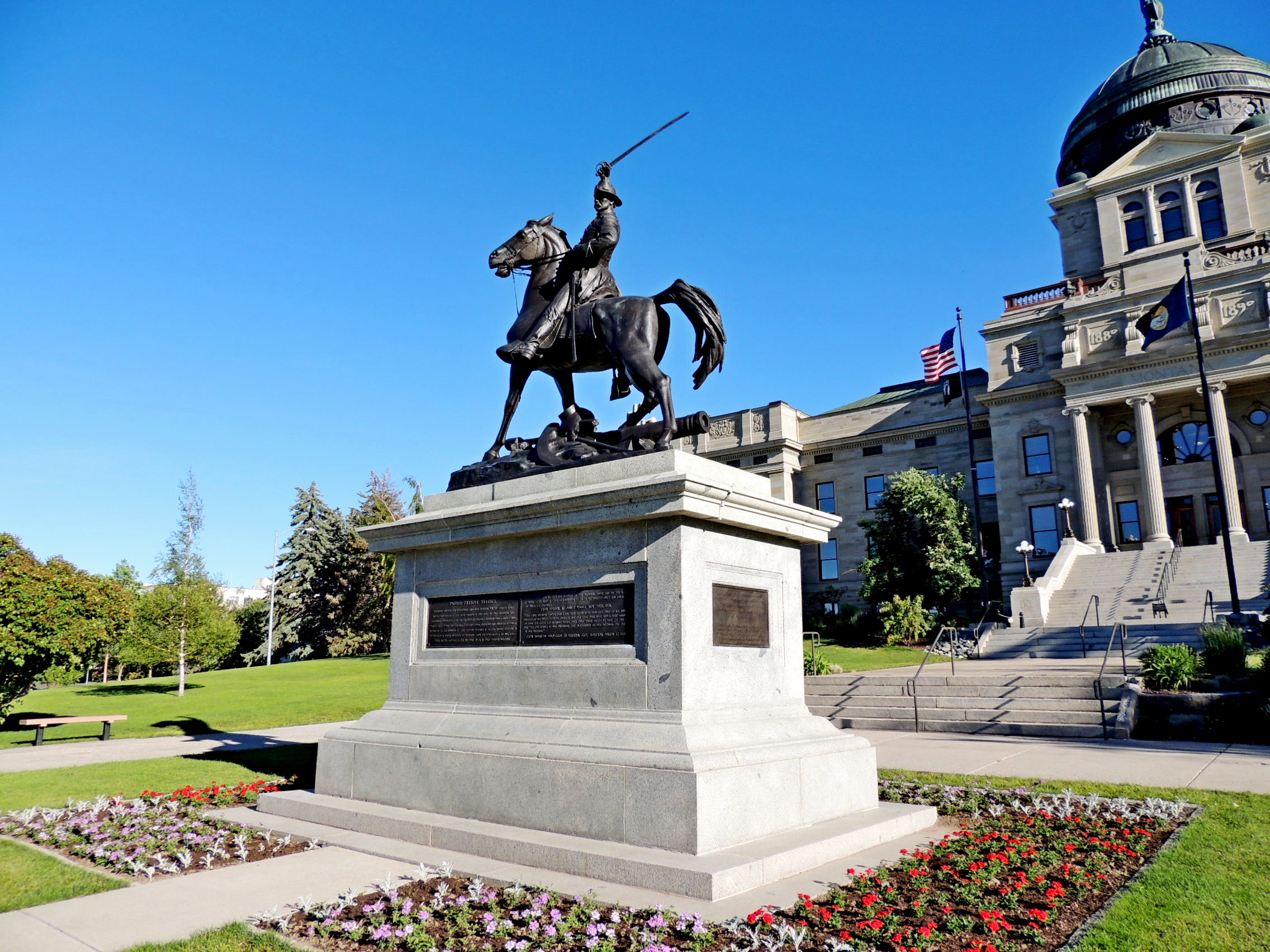Sir,—Ruairí Nolan’s exploration of the mystery of Thomas Francis Meagher’s death at Fort Benton, Montana, in 1867, when he was just 43 years old (HI 32.5, Sept./Oct. 2024), features a photograph of the fine equestrian statue of Meagher that stands in a place of honour outside the Montana state capitol at Helena. I paid a visit there during my time as ambassador to the USA (2017–22), when I naturally took pride in such commemorative prominence being given to a native of my own city of Waterford. I also wondered how it was that someone who was only ever acting governor of Montana, and for less than two years at that, had earned the honour of being placed on a lofty pedestal at the entrance to Montana’s state assembly. The answer, I think, derives from the illustrious career of another Irishman who made his mark in Montana—Marcus Daly, the ‘Copper King’ from Cavan.
Marcus Daly was born in Ballyjamesduff, Co. Cavan, in 1841 and arrived in America as a penniless fifteen-year-old, settling in New York and working there in various jobs, including as a longshoreman, before moving west, where he honed his skills at the huge Comstock silver-mine in Nevada. It was there that he befriended the journalist Samuel Clemens, whom we now know as Mark Twain. Daly’s career really took off when he moved to Montana in 1876, less than ten years after Meagher’s demise. He quickly acquired a stake in a silver-mine, but it was by his acquisition of the Anaconda Mine in Butte that Daly made his name and his fortune. His ventures in Montana had the support of wealthy backers, including George Hearst, father of the future newspaper magnate William Randolph Hearst. With his experience in mining, Daly realised that Butte, whose silver deposits were being exhausted, had vast reserves of copper, a product for which demand was rapidly increasing at that time. Daly dubbed Butte ‘the richest hill on earth’, as it turned out to have the world’s largest copper seam. Butte became a major Irish mining settlement where in the late nineteenth century perhaps 20% of the population were Irish-born. By all accounts an engaging and gregarious character and immensely popular with his fellow Irish immigrants, Marcus Daly became a giant of the mining industry, but his ascendancy was hotly contested.

A bitter rivalry broke out between Daly and another mine-owner, William Andrews Clark, in what became known as ‘the war of the Copper Kings’. The two were as different as chalk and cheese. According to those who knew them, Daly was ‘rough, genial, unassuming, popular’, while Clark was ‘dapper, immaculate, polished, polite, inscrutable, a character almost unique among the rough diamonds of the American frontier’. Clark was of Scots-Irish descent and was born in Pennsylvania but came out west with the single-minded goal of building a business empire, which he did. Mark Twain, who also knew Clark, retained a very dim view of him. Daly, the self-made Catholic Irishman, jousted with the university-educated Clark. Both had the backing of newspapers they owned—Daly’s Anaconda Standard was ranged against Clark’s Butte Miner.
In the heyday of the Montana mining boom both men lived in a grand style, with showy homes in New York and, in Daly’s case, a luxury hotel that he built in Montana, where he and his family were often the only guests. Daly had a passion for horse-racing and bred his own, one of which was cheekily called ‘Tammany’, a nod to the Irish-dominated New York political machine that was much criticised by advocates of political reform, including that rising star of late nineteenth-century US politics Theodore Roosevelt.
The decades-long tussle between the two Copper Kings had elements of Green versus Orange, as Daly stubbornly stood in the way of Clark’s ambition to become a US senator. Clark made three bids for high political office but was stymied each time by Daly, who never showed any interest in securing an elected position for himself. Daly’s Irish supporters were pitted against those who had migrated from the American South after the Civil War. While both factions were Democrats, they had little else in common and were at loggerheads over the spoils of life in a booming but unruly corner of America’s big sky country.
The Daly–Clark rivalry peaked when the time came for Montana to choose a state capital. Daly favoured Anaconda, a predominantly Irish settlement called after his Butte mine and the location of a major smelter that he built there in the 1880s. Indeed, the municipality of Anaconda still hosts the only Hibernian Hall west of the Mississippi, which to this day is festooned with Irish and Irish-American artefacts. Clark campaigned for Helena, and in a hotly contested referendum in which both sides spent heavily, more than $1 million in all, Helena got the nod. Accusations of electoral skulduggery were rife.
Montana’s Senate election of 1899 became notorious, one of the most corrupt in American history. Clark was reckoned to have spent $430,000 to purchase the votes of Montana legislators, who at that time chose the state’s senator. When the scale of the malfeasance was revealed, including by Daly’s Anaconda Standard newspaper, the US Senate declared Clark’s election null and void on grounds of corruption, while acknowledging that there had been ample wrongdoing on both sides.
Marcus Daly was a very wealthy man when he died in New York in 1900, one of the outstanding success stories of America’s gilded age. After his death, his 185 horses were sold for $400,000. With Daly no longer blocking his way, the following year Clark finally achieved his long-held ambition of becoming a US senator. The prominently located statue of Daly in Butte by the Dublin-born sculptor Augustus Saint-Gaudens testifies to the high regard in which he was held in a town that was once one of the most Irish places in the whole of the United States.
Marcus Daly’s achievement in building the Irish in Montana into a political force capable of blocking the determined ambitions of William Andrews Clark was instrumental in getting Thomas Francis Meagher installed on his lofty pedestal in historic Helena. Daly was honorary chairman of the group that campaigned to erect the Meagher memorial, and no doubt provided much of the necessary funding. The Irish may have lost the argument about where the state’s capital ought to be located, but they made sure to get their man Meagher his permanent place in the sun.—Yours etc.,
DANIEL MULHALL
